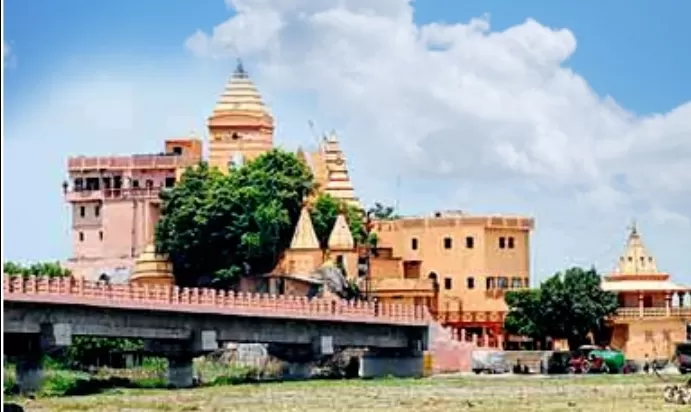The rare ancient Temple of Ajgaivinath Mahadev for which the city of Sultanganj in Bhagalpur District of Bihar is famous!
Ajgaivinath a Lord Shiva temple situated on a rock in the watercourse of river Ganges, is a holy place where Sage Jahnu lived, his ashram was a great place of cultural and spiritual learning.
Here the river Ganges flows northwards known as Uttarvahini Ganga which is considered to be auspicious.
Locals claim it to be a Swayambhu that appeared on the rock, was discovered and then given an abode.
The Indian legend has it that Lord Shiva was presented with his bow, Ajgav, here and the place was named as Ajgaivinath. Originally, the place was called Jahangira which meant the dwelling place of Sage Jahanu.
Millions of Shiv Bhakts from around the country come here in the auspicious month of Shravan or Sawan ( July - August) to fill their cans with the holy water of the northern flowing river Ganga and start their holy journey of 104kms from Ajgaivinath temple of Sultanganj up to Baba Baidyanath Dham another very important Shiva temple in Deoghar, Jharkhand.
Gangajal is offered to Lord Shiva, " Jal Abhishek ", whom they admire as the mighty one who will empower his bhakts and fulfill their desires!
This is considered as the biggest or longest fair in the world which is called as Shravani Mela, and the carriers of the holy water are called "Kawariyas".
Ajgaivinath Mahadev temple has beautiful rock carvings of various Gods and Goddesses from the Hindu pantheon probably from the Pala period. Unfortunately not much study has been done of the inscriptions and rock sculptures.
The temple is attractive, has a very peaceful and pleasant ambience, and one gets to see the wide expanse of the Ganges here!
I was told in the monsoons its a very pretty site, when the waters of the Ganges splash around and surround the temple, it looks like a ship afloat!
The north flowing Ganges and this hill, appeared to be so attractive that even Buddhists built stupas here in ancient times . Thus Sultanganj has once been a place of pilgrimage for Buddhists too!
To the east of the temple is an ancient mosque also a mythological place called Murli hill, with Buddhist and Brahmin arts engraved. A seven feet high stone statue of Lord Buddha in a meditative posture is on the hill. Apart from this, statues of many Hindu gods and goddesses are engraved. Social harmony is visible here, when Har Har Mahadev from the temple and the sound of azaan from the mosque collides!
Till a few years ago, travellers had to take the help of a boat especially in the monsoons to reach the temple and take darshan, but now a small culvert has been made and access can be made on foot.






































